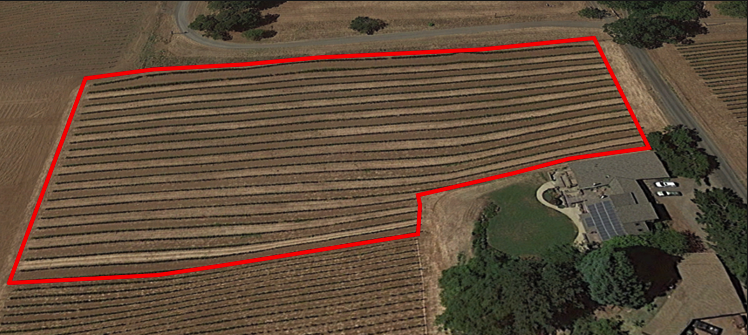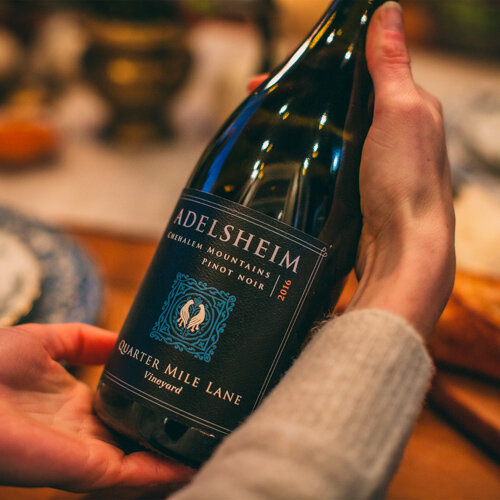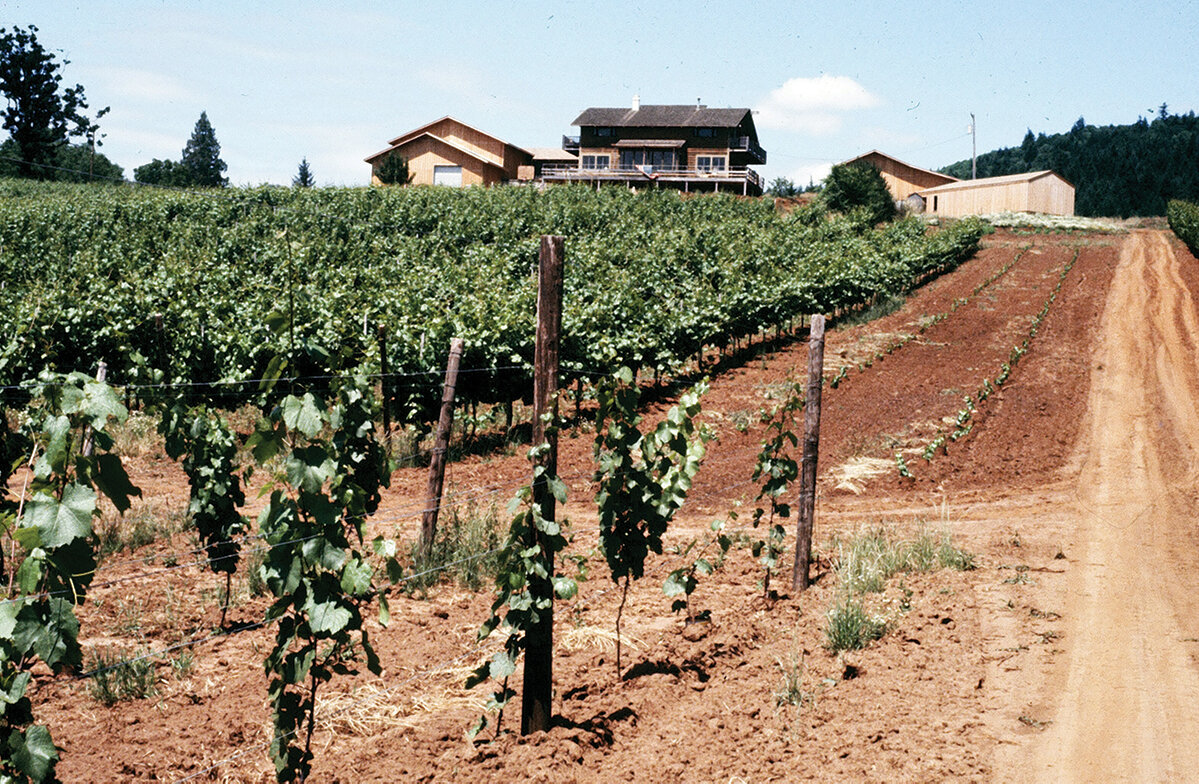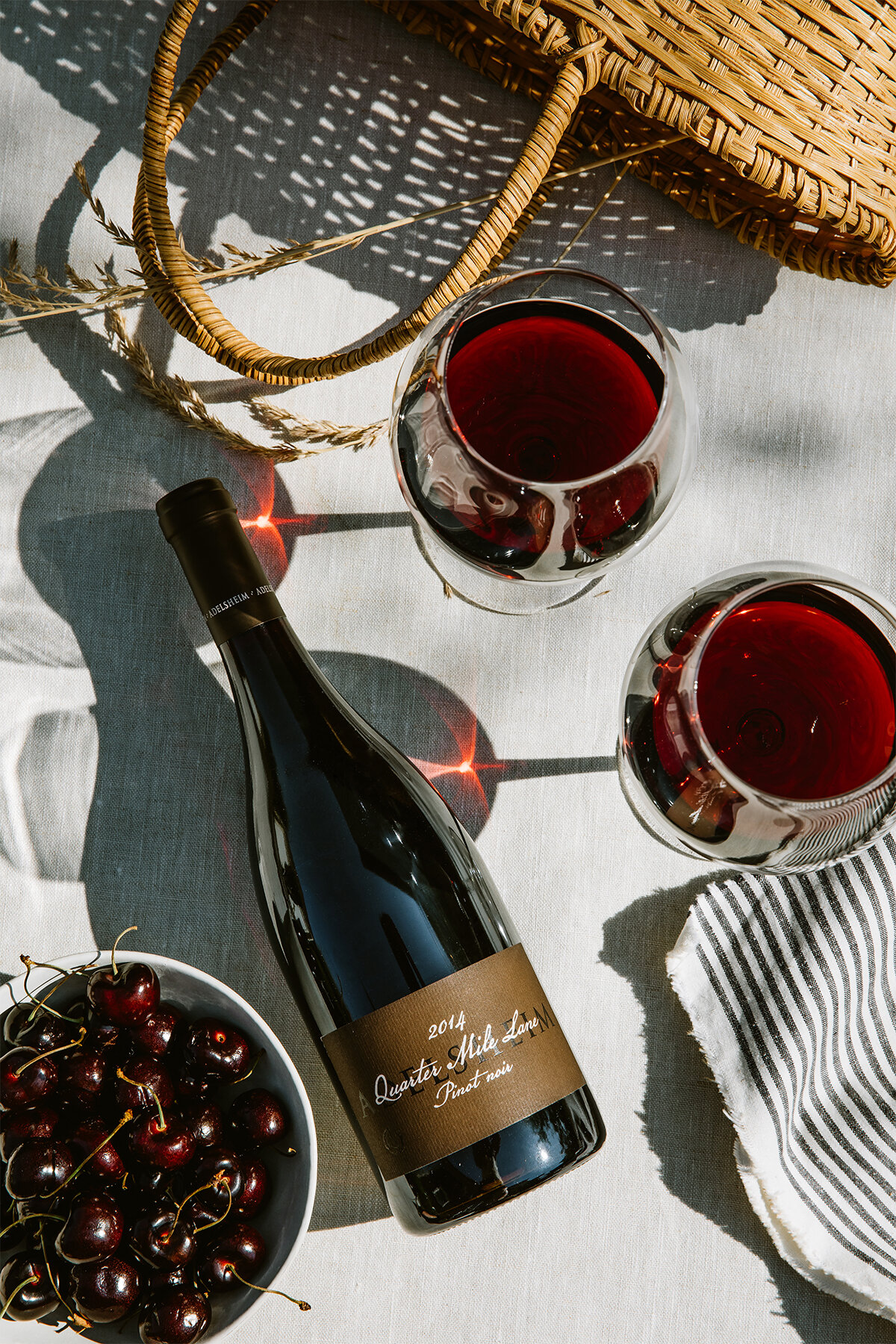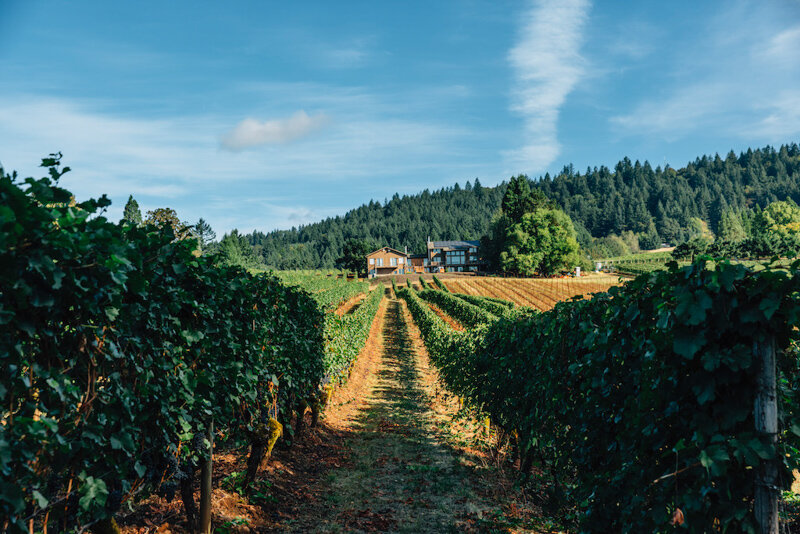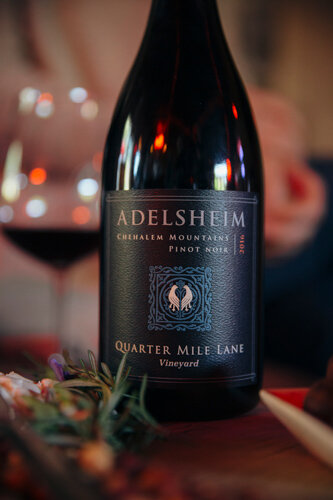A look into our Quarter Mile Lane Vineyard
David and Ginny Adelsheim
“Quarter Mile Lane Vineyard is celebrating an anniversary (of sorts) this year. In fact, this month – June 4th – was the 50th anniversary of our purchase of the piece of property that is now Quarter Mile Lane Vineyard. We started planting the property in 1972 and made our first commercial wine, including a Pinot noir from that vineyard, in 1978. Though we had planted about two-acres of Pinot noir in August, 1972, most of those plants died. Partially because – well, planting in the droughts of August in the Willamette Valley was just plain stupid. It also didn’t help that the surviving Pinot plants were the last to get weeded the following Spring. So only 249 Pinot noir plants from the 1972 planting survived
In 1974, we tried again. We wanted to plant about 6½-acres of Pinot noir that year, all “Pommard” clone (which we had learned about at a December 1973 tasting.) But getting enough plants proved challenging. We had a planting party scheduled for April 20 and had invited every able-bodied person we knew to be part of the “fun.” (The “fun” included digging a hole with a shovel every six feet, planting a small grapevine in that hole and, once 2.4-acres were planted, having a huge lunch and wine.) The nursery, from whom we had ordered the vines, had only 1323 of the “Pommard” plants we’d ordered and many were so weak, we could not plant them. The nursery back-filled our order with 1000 Pinot vines destined for another customer. What we did not realize at the time was that those 1000 vines were probably not “Pommard” clone. In fact, to this day, we do not know what they were – and are.
Block 1 of Quarter Mile Lane Vineyard
What we do know is that the block we planted that day (now called Block 1 of the Quarter Mile Lane Vineyard) is unique. Partly because of the mystery of its genetic make-up, but mostly because of the attributes of the site. In the first Google Earth view, you can see that the block is located halfway up the south side of the Chehalem Mountains. The lowest point of the block is 617 feet (above sea level) and it goes up to 675 feet. (The top of the Mountains, at the top of the picture, are about 1200 feet.) It is on a basaltic landslide that fell off the top of the Mountains. The soils under this block were called “Jory” when we purchased the property but have been renamed “Saum” and “Parrett” (though the soils, of course, haven’t changed.)
Close up of Block 1
On the second Google Earth view (now looking west,) you can see that most of Block 1 faces more-or-less towards us, southeast. Otherwise, these 2.4-acres don’t appear to be anything special. So, why do the wines from this block taste the way they do? Soil, climate and wine scientists have substantial disagreements on the way a site makes wines taste the way they do. But I would guess that the water-holding capabilities of the basaltic soils, combined with the relatively higher elevation of the site (one of the last to be picked by us) and the block’s southeast exposure all contribute.
We have bottled wines separately from Block 1 of the QML Vineyard since 1981 They were first labeled as “Elizabeth’s Reserve” (in 1981 and 1988-1999.) Since 2000, they’ve had their own label – Quarter Mile Lane Vineyard.
What should wines from Block 1 of the QML Vineyard smell and taste like? They are red-fruited – I’ve always said they reminded me of wild cherries, but not the cough drops. Real wild cherries with the touch of greenness. There is also a delicate spiciness in the nose – baking spices, but more white spiciness than brown. Nothing obvious or overt. Just subtle hints behind the fruitiness. They are not “big-bodied” wines – they lean toward elegance. And the tannins polymerize relatively quickly, so that the wines have a smoothness and richness pretty early on. And like all Willamette Valley wines, acidity is the backbone of the wine. When every decision is correct in the winery, these wines are superbly balanced. And, lastly, they seem to live forever, The 1981 is still very alive and not over the hill.




